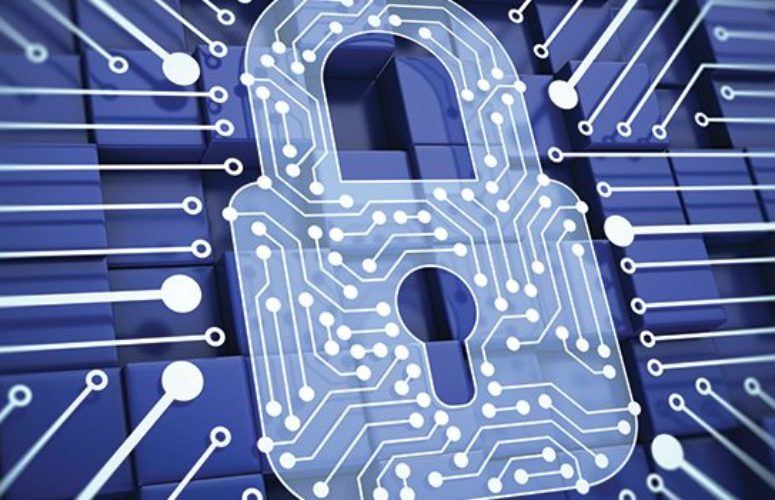
Higher Education and the Digital Classroom
Colleges and universities are striving to bridge the gap between in-person and remote instruction.
By Jim Pytell, Managing Editor On Feb 3, 2021Ever since the World Wide Web became publicly available nearly three decades ago, the internet has connected people across the globe in ways never before seen in human history. This digital communication has evolved exponentially since then, and in its current form, has allowed us to keep some semblance of continuity during the COVID-19 pandemic, where limits and restrictions have been placed on gathering face-to-face. One area where the powers of online communication are being explored more in-depth than ever before is in the classroom, where colleges and universities have been using a combination of both hybrid and all-remote instruction for the past two semesters.
“The current spring semester yet again is a mix of in-person, online and hybrid course offerings,” says Ed Christensen, Ph.D., vice president for information management at Monmouth University. “Where the Spring 2020 semester necessitated a ‘just dive in’ approach to remote learning, and Fall 2020 offered the opportunity to be more thoughtful and plan for remote delivery from the outset and experiment, Spring 2021 provides instructors the first real opportunity to reflect on their experiences and determine what technological strategies to implement moving forward.”
Maintaining Engagement is Critical
According to Christensen, one of the biggest challenges that professors have cited regarding the digital classroom is the ability to engage students and measure said engagement.
“Commanding a classroom from behind a webcam, keeping students engaged and on the right path, and trying to replicate the community created inside the four walls of a classroom have challenged our faculty to rethink how they have always done things,” Christensen explains.
“Faculty wrestle with questions about requiring students to keep their webcams turned on, assigning significantly more low-stakes assessments to measure engagement in lieu of synchronous discussions and how to handle high-stakes assessments in a potentially unstable environment, where privacy, connectivity and bandwidth issues can – and do – pop up often,” he adds.
The use of continuous connectivity among students, including weekly discussions, assignments and faculty feedback to provide multiple points of contact, are core elements to a successful digital learning environment, according to Miriam L. Frolow, Ph.D., campus and academic director, University of Phoenix (UOPX) Jersey City Campus. “This approach not only enhances engagement for the students, it also provides faculty and student advisors with tools to quickly identify students who may be struggling. In short, the digital learning platform provides a holistic environment to enhance student success,” Frolow says.
While the instructor plays a critical role, there is also a responsibility on the students themselves to make an effort to be actively engaged while online, to spur collaboration and push discussion of the material being taught, which enriches the entire digital learning experience.
“Remote learning environments must put more emphasis on diligently cultivating interaction among students,” says Fadi P. Deek, Ph.D., provost and senior executive vice president, New Jersey Institute of Technology (NJIT). “This can be done using ‘breakout rooms’, activities and open questions that encourage students to interact with each other.
“In some ways, good teaching is a performance and, like any performance, it relies on the smooth application of available technology,” Deek continues. “For faculty accustomed to teaching in a physical classroom, adapting to digital technology has required some adjustments to keep the students engaged in learning. While instructors are finding new ways to teach, students also must adapt to learning more independently and with more personal responsibility.”
Deek says that the autonomy of the digital environment also forces students to take more responsibility for their own learning, and since they cannot be continuously monitored, in order to succeed, they must learn to be accountable for their own education in new ways.
“One especially interesting trend we encountered this semester has been a collaborative effort between students and instructors to try new things,” Christensen says. “In the past, the instructor has always dictated which tools were to be used. This semester, our Instructional Support Department had a number of requests from faculty to learn or implement new things, based on suggestions from students.”
He cites Slack, a digital communication platform, as one example of a technology suggested by students that Monmouth University started to use.
Unrivaled Flexibility
While the challenges of student engagement and technological issues are evident, remote learning does have its benefits.
“Teaching and learning digitally has brought unaccustomed flexibility to our students,” Deek says. “Students now have access to digital classrooms wherever they have access to the internet, [and this is] also true for student support services, which now are available remotely and on-demand.”
“Unlike in a live lecture where students must rely on their notes and recall, a narrated PowerPoint, video demonstration, or even a recording of a synchronous Zoom session can be accessed again and again as needed by students, in digestible bits,” Christensen adds.
Long-term Impact of Remote Learning
“We should not pretend that in-person learning will disappear,” Deek says. “There are many parts of the in-person learning experience that cannot be duplicated digitally. This is especially true for labs and other courses where students need to physically interact with equipment and materials. It also is true that something ineffable is lost from the learning experience without the face-to-face component.”
He notes that there will also be a significant impact on the physical requirements of campus facilities in “ways we can only begin to contemplate,” stating it is likely that more classes will continue to use digital technology and such equipment will be permanently installed across more of the campus.
“There also will be other impacts on student services and support,” Deek continues. “For example, waiting areas and physical office space will be reconfigured as more student support services can be provided in a dual mode, in-person and online.”
Additionally, Christensen notes that there are certain conveniences and efficiencies afforded by online instruction that faculty and students may have a hard time giving up. In all likelihood, the future of education will include some type of digital component, the degree to which remains to be seen.
“Sometimes it takes a crisis to expedite change that is likely to happen,” Frolow says. “Online learning will not replace in-person classes; rather it can be integrated into traditional classroom settings to enhance the overall learning experience. What will be interesting to see on the other side of the pandemic is how this shift to a fluid use of online and in-person modalities will affect not just education, but the careers and work-life of students after they graduate. Even jobs that are hands-on are likely to embrace online training and increased employee interaction, especially for those companies with a geographically diverse workforce.”
To access more business news, visit NJB News Now.
Related Articles:





